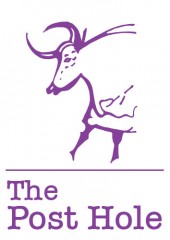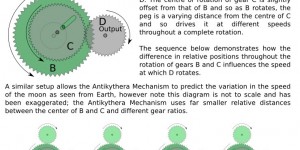As Archaeology blossomed into the discipline we know today there emerged several notable figures, each making significant advances in archaeological method in their own particular style. These were men like Mortimer Wheeler and Augustus Pitt Rivers (Lieutenant-General Augustus Henry Lane Fox Pitt Rivers, as he was known to his friends) who, had it existed, would have both rightly assumed places in the Archaeologist's hall of fame. Unfortunately History has tended to ignore a further two figures, both accomplished archaeologists in their own right, who were active in the first part of the last century, particularly the 1930s. The men in question are Dr Henry 'Indiana' Jones Jr, a professor at Marshall College, Bedford, Connecticut, and Rene Belloq, who was French.
The article, both in this issue and the next, attempts to shed some light on these men and the research they undertook. I have singled out two projects from 1936 which are notable because both Dr Jones and Belloq worked on them and, as we shall see, their drastically varying approaches and methods had the potential to become a source of tension.## 1936: Hovitos Temple, Peru: The 'Golden Idol'At this site both archaeologists worked, with varying degrees of success, to research a Chachapoyan temple containing a golden representation of their Goddess of fertility. Dr Jones, characteristically eager to begin fieldwork, ventured into the Peruvian jungle with a small party of guides and helpers. Unfortunately his team, which had admittedly been chosen poorly, proved less than satisfactory after one member tried to shoot him, and the rest ran away. Belloq, on the other hand, showed he was far ahead of contemporary archaeological practice by involving the native Hovitos population from an early stage, presumably with a presentation in the local village hall outlining his project and how it would benefit the community. The courtesy shown to the indigenous population was sufficient to earn Belloq the full co-operation of the Hovitos, and in a heart-warming gesture they pledged to kill anyone attempting to disrupt the work.
Dr Jones, followed by Satipo, the sole remaining loyal member of his group, successfully located the entrance to the temple using one of the most advanced pieces of technology available to archaeologists of the time: an old map. Having found the fertility idol in its original resting place inside the temple, Dr Jones, with no effort made to photograph, measure, or otherwise record its interior, attempted to purchase the idol from the Gods with sand. Here his preliminary research let him down as Dr Jones was ignorant of the fact that sand was not the currency in Peru at the time, indeed had not been for several years. As a result the Gods became angry and smited the temple, causing it to collapse into a pile of rubble, including oddly spherical boulders, thus destroying any opportunity for a further, more thorough study of its remains. An unfortunate casualty in the destruction of the temple was the loyal Satipo who, having grown disillusioned with Dr Jones' cavalier approach to artefact retrieval, had attempted to remove the idol himself in order to ensure its proper treatment.
The sole survivor of his expedition, Dr Jones was forced to donate the idol to the Hovitos, via Belloq, who concluded the handover ceremony with his trademark evil chuckle. Having angered the native population by desecrating their cultural heritage, he escaped in the aeroplane which is speculated to have been employed in the pre-excavation stages to conduct an aerial photographic survey.
So what conclusions can we draw from this project? Well, at this stage it seems obvious that Dr Jones' strengths lay in fieldwork, but his preparation and organisational skills were certainly deficient, as was his lack of awareness of the wider cultural issues, all of which tend to reduce the quality of his research, as well as any potential future publication of his findings. Rene Belloq, on the other hand, although not as actively involved in the practical side of the research, proved adept at getting the Hovitos on his side and employing them in the project, exhibiting a sensitivity to the concerns of the local population sadly lacking in Dr Jones' expedition. As Belloq observed to Dr Jones at the conclusion of the project; 'If only you spoke Hovito'.
In the next issue we will explore how Dr Jones and Belloq approached their next project, a large scale dig in Egypt at Tanis, near Cairo.





